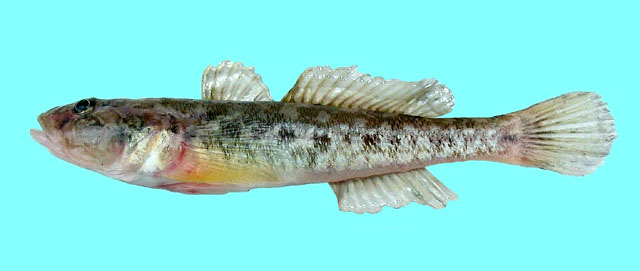| Gobiidae (Gobies), subfamily: Gobiinae |
| 24.5 cm TL (male/unsexed); max. reported age: 4 years |
|
demersal; brackish; marine |
| Europe and Asia: Black Sea, Sea of Azov and Caspian Sea basins. Found in the sea only but enter estuaries in some areas (Ref. 92840). |
|
Dorsal spines (total): 7-7; Dorsal soft rays (total): 15-18; Anal spines: 1-1; Anal soft rays: 10-15. This species is distinguished from related species in Europe by the following characters: interorbital distance equal to eye diameter; nape completely scaled; pelvic disc fraenum with small, rounded lobes, fraenum length < 1/6 of its width at base; pelvic disc reaching 60-70 % of distance between its origin and anus; first branched ray of second dorsal about twice as long as penultimate ray; scales in midlateral series 57-67 + 2-3 (Ref. 59043). |
| Occurs inshore, on shelly ground, sand, muddy sand or mud. May enter freshwaters. Feeds on crustaceans (mysids, corophiid amphipods), small fish (gobies), bivalves, polychaetes, and chironomid larvae. Sexually mature at 1 to 2 years (Ref. 4696). Spawns in March to June with females spawning at least twice during this season. Adhesive eggs are deposited under or between stones, shells and aquatic plants and males guard the eggs until hatching (Ref. 59043). |
|
Least Concern (LC); Date assessed: 01 January 2008 Ref. (130435)
|
| harmless |
|
Occurs along the shores of Mangyshlak (Ref. 2058). |
Source and more info: www.fishbase.org. For personal, classroom, and other internal use only. Not for publication.

